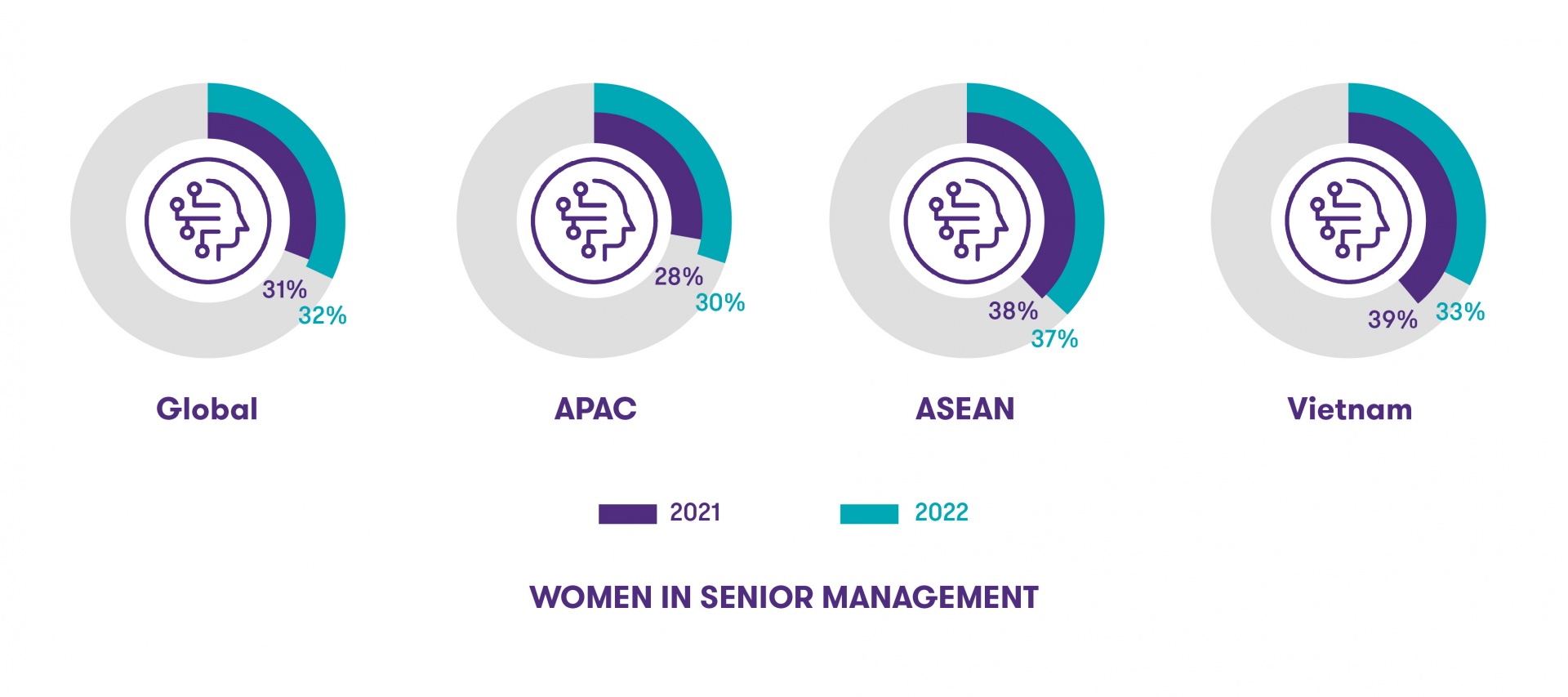Unforeseen impacts on gender diversity
 |
| Gender diversity is being impacted by global events |
In the early days of the pandemic, few could have predicted the lasting effect that it would have on established ways of working. Now, with much of the world stabilising, and recognition from businesses that change was needed, the march towards more inclusive working practices to attract and retain a more diverse talent pool continues unabated.
With 57 per cent of mid-market leaders expecting that a skill shortage will be a major constraint to their businesses in the year ahead, Grant Thornton’s research from last year shows that in response, 95 per cent of mid-market business leaders are now taking action to foster staff engagement and create an inclusive culture.
Nguyen Chi Trung, CEO and managing partner at Grant Thornton Vietnam said, “The war for talent and the great resignation are showing no signs of slowing down. Employees have high expectations and the upper hand in negotiations in a way not seen before. We are seeing increasingly inclusive business practices that are designed to entice prospective employees and preserve talent being rolled out. This is ultimately benefiting many women who, in the past, were confined by more traditional approaches to work. Now, they have the freedom of choice, and it is my expectation that more inclusive environments are here to stay for the foreseeable future.”
As these new ways of working become the norm for many organisations, 88 per cent of respondents in Vietnam agree or strongly agree that working practices during the last two years have benefited women in business, and a similar percentage expect that the resulting impacts will continue to have long-term benefits for women’s career trajectories.
This could be an indication that a step change is on the horizon, but in the meantime, the number of women in senior management positions continues its glacial progress.
Whilst globally there was an increase of 1 percentage point (pp), Vietnam actually recorded a fall of 6 pp to 33 per cent. This of course could be the result of lockdown and school closures forcing mothers to give up work to look after children at home.
In comparison, Asia-Pacific recorded a figure of 30 per cent of senior management positions filled by women and 37 per cent in ASEAN.
 |
The role of human resource director was the top position occupied by women in Vietnam. This was up 9pp to 68 per cent, whilst in Asia-Pacific and ASEAN the figures were 38 per cent (+4pp) and 42 per cent (+1pp) respectively.
In Vietnam, the number two role was that of CFO with 47 per cent, but this represented a reduction of 13pp from 2021. In Asia-Pacific, women occupying this position accounted for 36 per cent (-1 pp), and in ASEAN the figure stood at 53 per cent (+6pp).
In 2021, research revealed that the proportion of women in senior management roles had passed the important 30 per cent tipping threshold for the first time. All global regions have now passed the crucial 30 per cent milestone, including Asia-Pacific, which was the only region not to hit this figure in 2021. At 33 per cent, Vietnam is ahead of the curve but sits behind the ASEAN average of 37 per cent.
What the stars mean:
★ Poor ★ ★ Promising ★★★ Good ★★★★ Very good ★★★★★ Exceptional
Themes: Empowering Women
- Female influence still to be attained
- Shaping Vietnam's corporate future: female board members show business excellence
- Nestlé Vietnam contributes to elevating the role of women across the supply chain
- Empowering female leaders in tech: insights and aspirations shared at KPMG Tech Innovator 2023
- Brighter Path programme hosts empowerment meeting for ethnic minority girls
Related Contents
Latest News
More News
- Ho Chi Minh City hits $8.37 billion in FDI (December 29, 2025 | 08:28)
- Tax sector wraps up 2025 and sets priorities for next year (December 25, 2025 | 14:00)
- Heavy industries set for pilot greenhouse gas quotas (December 25, 2025 | 10:00)
- $250 million deal targets women-owned SMEs, sustainable agriculture (December 22, 2025 | 17:40)
- UOB sees Vietnam growth easing in fourth quarter (December 22, 2025 | 17:39)
- Government moves to establish International Financial Centre (December 21, 2025 | 21:00)
- Vietnam's IFC to target global investment flows (December 21, 2025 | 18:00)
- Ha Tinh breaks ground on major Vingroup industrial and energy projects (December 19, 2025 | 18:24)
- EVN launches major power infrastructure projects nationwide (December 19, 2025 | 18:17)
- VAL inaugurates second production line to meet domestic animal feed demand (December 19, 2025 | 16:37)

 Tag:
Tag:





















 Mobile Version
Mobile Version